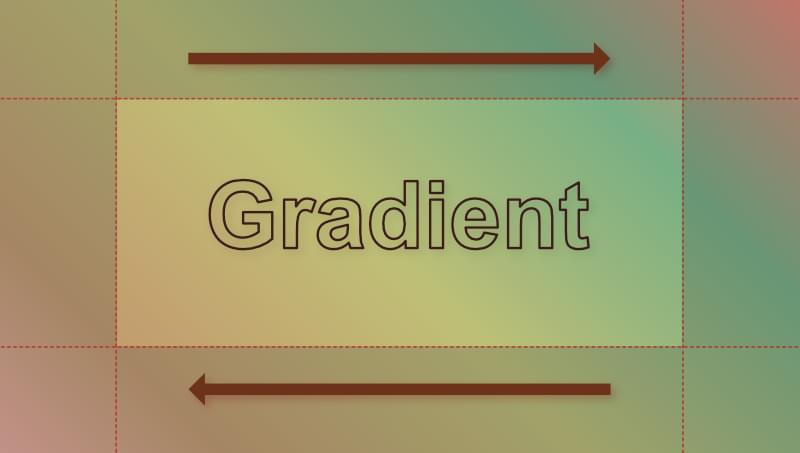On this fast tip, we’ll present how straightforward it’s to animate a background gradient with CSS.
In a latest article, we confirmed find out how to set a background gradient on textual content. The CodePen demo beneath exhibits the outcome.
Make sure that to learn by means of that article if you happen to’re undecided how we obtained to this outcome, as we’ll construct on this instance beneath.
For the sake of this demo, let’s add in some further colours to our gradient background:
h1 {
background-image: linear-gradient(
45deg,
#ffb3ba,
#c49c6e,
#bfbf76,
#77b084,
#ff7e74,
#3b82f6,
#c084fc,
#db2777
);
}
If we flip off background-clip: textual content and text-color: clear for a second, we get a greater sense of how our gradient fills the textual content’s content material field.
Let’s now undergo the steps of animating our background gradient.
Step 1: Adjusting the Background Dimension
To animate our gradient background, we have to make it greater than the textual content’s content material field so we are able to’t see all of it without delay. We will try this with the helpful background-size property. (You may learn all about background-size right here.)
I’m going to set the width of our background gradient to a few occasions the width of our heading factor:
h1 {
background-size: 300% 100%;
}
Now, solely a 3rd of the gradient background might be seen at anybody time, as seen beneath.
Step 2: Setting an Animation
Subsequent, we’ll arrange an animation that can transfer the background round in order that we’ll see completely different elements of it over time.
We will arrange a easy animation rule like so:
h1 {
animation: gradientAnimation 8s linear infinite;
}
That can transfer the background backwards and forwards as soon as each 16 seconds.
Subsequent, we’ll arrange an @keyframes assertion:
@keyframes gradientAnimation {
0% {
background-position: 0;
}
to {
background-position: 100%;
}
}
This easy @keyframes assertion will transfer our background from the highest left to the underside proper each eight seconds.
Within the Pen beneath, we’ve as soon as once more disabled background-clip: textual content and colour: clear so we are able to see what’s taking place within the background.
As soon as we re-enable background-clip: textual content and colour: clear, we see the completed product.
Fairly cool!
Animating a Background Picture
In our article on including gradient results and patterns to textual content, we additionally used a floral background picture. (See the Pen for that right here.)
Let’s have a go at animating that background too. We’ll do it barely in another way, as we don’t wish to distort the background picture.
Let’s take away background-size: comprise from the unique demo and never set a background dimension in any respect. That leaves us with this:
h1 {
colour: clear;
-webkit-background-clip: textual content;
background-clip: textual content;
background-image: url(floral.jpg);
-webkit-text-stroke: 1px #7512d7;
text-stroke: 1px #7512d7;
animation: gradientAnimation 20s linear infinite;
animation-direction: alternate;
}
@keyframes gradientAnimation {
0% {
background-position: 0;
}
to {
background-position: 100%;
}
}
The result’s proven within the CodePen demo beneath.
Attempt turning off background-clip: textual content and text-color: clear for a second if you wish to see what’s taking place within the background.
Our background picture is repeating by default, which doesn’t look too unhealthy for this explicit picture. (Simply out of curiosity, strive including background-repeat: no-repeat to see what what occurs with no repeating background.) In different conditions, the place the background picture doesn’t tile so nicely, you would possibly wish to stop the picture repeating after which use background-size to make the picture bigger, like we did with the gradient background above. For instance:
h1 {
background-repeat: no-repeat;
background-size: 120%;
}
Right here’s the impact of doing that on our floral demo.
Conclusion
We may do far more spectacular animations that this, however the intention was to maintain it easy right here. You may dig deeper into CSS keyframes and animations in Tips on how to Get Began with CSS Animation. You can even mess around with the timing of the animation, angle of the gradient and so forth.
As talked about within the earlier article, have enjoyable with this however don’t go overboard, as an excessive amount of of this sort of animation can grow to be annoying. A delicate animated background on a heading would possibly simply add that contact of curiosity or intrigue it’s good to maintain your viewers engaged.


